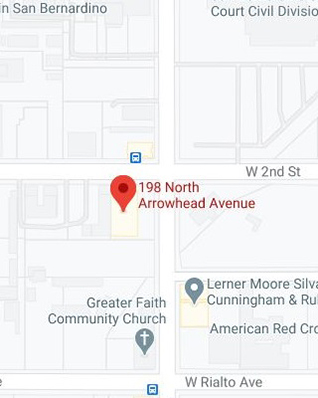
Although it doesn’t happen often, the detention of U.S. citizens who are unable to prove their United States citizenship takes place more than the public suspects.
The recent news story of Lorenzo Palma reminded me about this sad reality.
I recall, about ten years ago, assisting a Mexican immigrant, Jorge, who was relatively clueless about his citizen status, win citizenship.
Despite that his family had not claimed his status over an entire generation.
I was originally retained to assist Jorge on his appeal. He was facing deportation.
He was in his mid-40s.
His wife, Rosie, was born in New York. She had attempted to sponsor him for legal residency. His application was denied and he was placed in removal proceedings at immigration court.
He had lost his immigration case.
Upon questioning, I learned he was possibly a U.S. citizen – something neither he nor his attorney had considered.
It meant proving he was a citizen through his grandparent.
A Missed Generation Of Citizenship
Benefits And Privileges
To say the least, he was shocked. If my suspicion was correct, it meant his family had lost a full generation of U.S. citizenship benefits.
Since acquisition of citizenship through parents can be passed down, but generations cannot be skipped, we had to demonstrate why Jorge and his father had not previously sought such status.
We needed to establish their failure to take action was based not on neglect, but due to unawareness.
I raised the citizenship issue as part of his BIA appeal. The challenge was based on the doctrine of double constructive retention.
To begin, we had to first prove constructive retention applied to his father.
What Is Constructive Retention?
Under the doctrine of constructive retention, U.S. citizenship may be granted to individuals, born abroad, who were not aware they were entitled to citizenship through a parent who was a U.S. citizen.
In some cases, the individual did not know their parent was a U.S. citizen. In others, they knew a parent had been born in the United States but they believed they lacked eligibility to claim their own citizenship.
What Is Double Constructive Retention?
Double constructive retention pertains to grandchildren. They seek citizenship based on their parent’s lack of knowledge they were entitled to citizenship based on a grandparent’s U.S. citizenship.
In my experience as a citizenship attorney, the issue generally arises when a grandchild discovers that a parent was entitled to claim U.S. citizenship – often not until the death of a grandparent and the family rummages through the deceased’s old papers.
In such cases, the parent then seeks citizenship based on unawareness they were eligible for citizenship. Due to their lack of knowledge, their children had no reason to think they, too, may have qualified for U.S. citizenship
The BIA approved his appeal, sending the matter back to the immigration judge not only to reweigh the merits of his request for cancellation of removal, but also to review evidence about his possible citizenship status.
However, Jorge now faced another major concern.
Obtaining evidence to prove an immigration claim based on a lost generation of citizenship is akin to finding a needle in a haystack.
Much like the case of Lorenzo Palma.
Almost all clients, when they first visit my citizenship attorney services office, wonder why I question them about the immigration history of their grandparents during their initial case consultation – especially when their parents never claimed U.S. citizenship.
Palma’s 18 month detention ordeal in an immigration jail illustrates why such answers are sometimes critical.
U.S. Citizen Released After 18 Months in Houston Immigration Jail
Daniel M. Kowalski, Lexis-Nexis, January 19, 2016Ever since immigration judge Saul Greenstein flagged the possibility that Mr. Palma, 39, unbeknownst to himself, might have acquired U.S. citizenship from his mother, who, born in Mexico in 1948, unbeknownst to herself, might have acquired it from her father, the family had been on a scavenger hunt to find evidence the government already had to prove Lorenzo’s maternal grandfather Lazaro Palma was born in the United States and resided there 10 years, five of which were after the age of 16.
The search required the location of decades-old records, ranging from Lazaro Palma’s 1914 Texas birth certificate to a 1950 manifest to various other documents and affidavits, all of which cost the family time, worry, and money.
Neglected Citizenship Status: A Not Uncommon Immigration Problem
This type of immigration problem is not surprising, especially in U.S. Southwestern states.
(Of course, the issue of acquiring citizenship through a grandparent is broader than just a Southwestern United States immigration matter. It is also fairly common with Canadian families. And as I have learned first hand, there are immigrants from Czechoslovakia, Romania, Germany, Samoa, and perhaps every nation in the world who can potentially make such claims.)
In a global community, many folks cross boundaries and move to foreign countries for work, pleasure, or love. Some stay abroad for many, many years, and never return to the United States. Several years later, children are born, unsuspecting that they can legally claim their U.S. citizenship status.
If children are unaware of their right to claim citizenship, most grandchildren would not know.
This was Mr. Palma’s situation.
In Jorge’s case, our efforts to unlock the doors of citizenship led to the discovery he had a half-sister, born to his father several years after he had returned to the United States.
She, too, was fascinated by our hypothesis. She proved invaluable in helping to prove her father’s birth place, family heritage, and 65-year history of residence.
As a San Bernardino immigration attorney, I’ve learned in these types of matters, a small dose of good luck is often the determining factor.
She was our four-leaf clover.
The fortuitous revelation in Mr. Palma’s case was made by the immigration judge – and I would be remiss not to emphasize that point here.
In his matter, the immigration judge flagged the legal issue surrounding his potential acquisition of citizenship claim, if constructive retention rights applied to him.
Unfortunately, the degree of knowledge, expertise, and thoroughness – as well as the level of compassion in ensuring immigrants’ due process rights are fully developed before a final deportation order is issued – that were exhibited in Mr. Palma’s case is not common to all who wear black robes at immigration proceedings.
He deserves kudos and praise.
For Mr. Palma, he unlocked the door to citizenship after his family had skipped an entire generation of U.S. citizenship benefits and privileges.
I commend him for his persistence and willingness to strive for what, at times, likely seemed like an impossible dream to him and his family.
He, too, deserves kudos and praise.
By Carlos Batara, Immigration Law, Policy, And Politics




